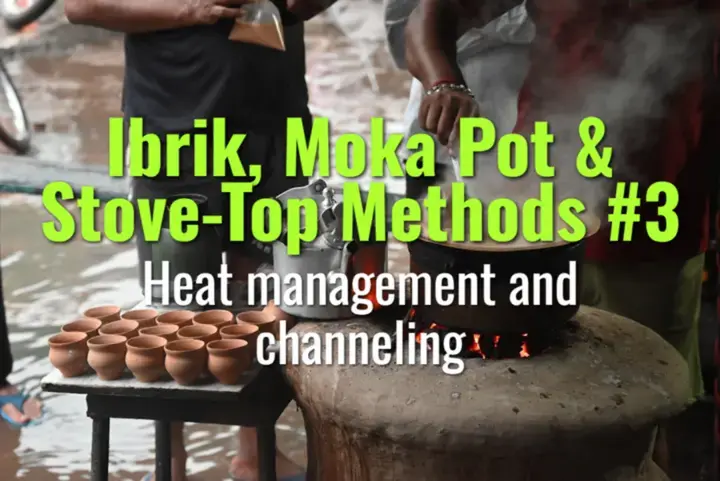Heat management and channeling
How heat control during Moka pot brewing influences extraction, and how poor management can cause channeling through the coffee bed.
- Coffee Basics Nerds
- 1 min read
Article 3 of 12 in Ibrik, Moka Pot & Stove-Top Methods/

Role of Heat in Moka Pot Brewing
- Heat drives steam pressure in the boiler, pushing hot water through the coffee bed.
- Too much heat → water surges violently, disrupting puck.
- Too little heat → weak pressure, leading to under-extraction and stalled flow.
Channeling in Moka Pots
- Channeling = water finds weak paths through the coffee bed instead of extracting evenly.
- Causes:
- Excessive upward pressure from rapid heating.
- Uneven coffee distribution or tamping (should not be tamped tightly).
- Grind too fine → bed compacts, water forces channels.
- Results in bitter + sour mix, uneven extraction, and weak crema layer.
Heat Management Best Practices
- Medium-Low Heat: Ensures gradual rise in pressure, steady flow.
- Preheated Water: Starting with warm water reduces time on stove, avoiding overheating of grounds.
- Remove Early: Take Moka pot off heat once gurgling starts to prevent scalding and dry boiling.
- Even Distribution: Fill basket loosely and level grounds; never tamp firmly.
Practical Tips
- Listen for sound cues: a steady stream indicates balance; sputtering signals overheating.
- For sweeter brews, stop extraction slightly before final spurts (which often carry harsher notes).
Summary
Good Moka pot coffee depends on gentle, controlled heating. Overheating causes channeling, leading to uneven and harsh flavors. Balanced heat and proper puck prep ensure a smooth, full-bodied cup without bitterness.